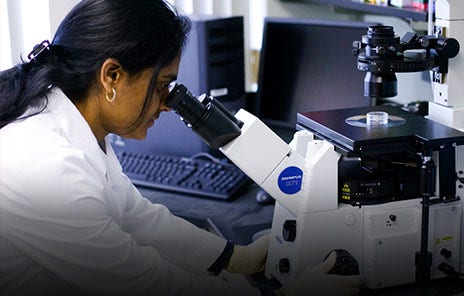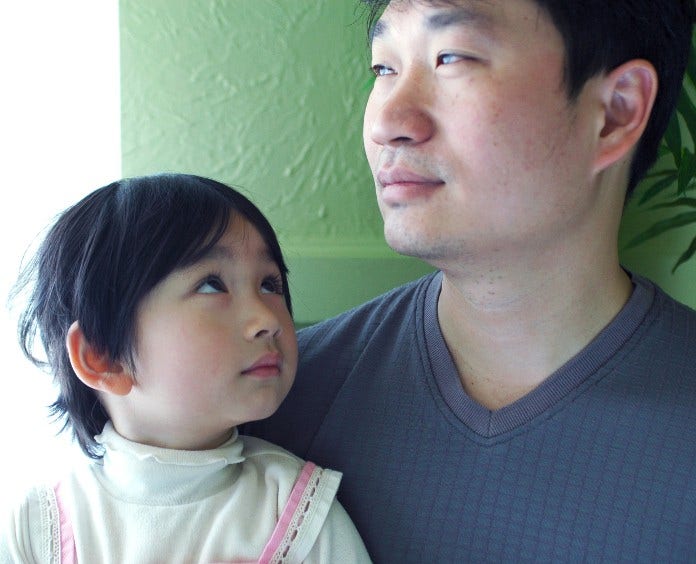Osteosarcoma
Osteosarcoma is a rare cancer of cells that normally make up bones. It is one of the more common solid tumors diagnosed in adolescents and young adults.
If you or your child has osteosarcoma, knowing what to expect may be helpful. Here you can find out more about osteosarcoma, including risk factors, symptoms and how it is found and treated.
About osteosarcoma
Sarcomas are cancers that develop from cells that normally make up connective tissues in the body, such as muscles, fat, bones, the lining of joints, or blood vessels. There are many types of sarcomas.
Osteosarcoma is a type of sarcoma. It is the most common type of bone cancer. Under a microscope, these tumors have immature bone cells (osteoid) in them. Cancer cells in these tumors often look like early forms of cells that would normally make new bone. Osteosarcoma can start in any bone. The bones of the arms and legs, often near the knee or shoulder, are the most common sites of osteosarcoma tumors.
Most osteosarcomas occur in children, teens, and young adults. Osteosarcoma tumors are more common in males than females and are slightly more common in Black and Hispanic individuals compared to White individuals.
Types of osteosarcoma
To diagnose osteosarcoma, a biopsy of the bone tumor must be done. Doctors then look at the cancer cells under the microscope and then use imaging tests to find out if the tumor has spread to other parts of the body. Osteosarcoma may be described based on:
- What the tumor cells look like under the microscope, called the histology or grade, which can tell doctors what type of cancer it is and how likely it is that the cancer will grow quickly or spread to other parts of the body.
- If the bone tumor is central (in the middle of the bone) or peripheral (on the surface of the bone).
- If the tumor is localized (in one spot) or metastatic (spread to other parts of the body, such as the lungs).
This is the most common type of osteosarcoma. Under a microscope, the cells of high-grade osteosarcomas look much more disorganized than the normal cells of the bones and show signs of growing and dividing quickly.
High-grade osteosarcomas need to be treated with surgery and chemotherapy. Localized osteosarcoma tumors have a better outlook than osteosarcoma that has spread to other parts of the body.
Conventional osteosarcomas
There are three main types of conventional osteosarcoma:
- Osteoblastic osteosarcoma, where cancer cells look most like the cells that make bone.
- Chondroblastic osteosarcoma, where cancer cells look most like the cells that make cartilage.
- Fibroblastic osteosarcoma, where cancer cells look most like the cells that make fibrous tissue.
Together, these account for 90% of all osteosarcomas. Osteoblastic osteosarcoma is the most common.
Less common osteosarcomas
In addition to conventional osteosarcoma, there are two other high-grade osteosarcoma variants:
- Small cell osteosarcoma
- Telangiectatic osteosarcoma
Most high-grade osteosarcomas develop from the center (medullary space) of bones. In rare cases, high-grade tumors can form on the bone surface. Osteosarcomas that develop in people with Paget disease or in a bone after radiation treatment are also more likely to be high grade.
These uncommon tumors fall between high-grade and low-grade osteosarcomas. The cells of these osteosarcomas, when looked at with a microscope, typically look like high-grade chondroblastic osteosarcoma and may show some signs of growing and dividing, but not as much as the high-grade tumors.
These tumors are more likely to form on the surface of the bone (periosteal) and may only need surgery to remove the tumor, without chemotherapy.
These are the slowest-growing osteosarcomas. Under a microscope, these cells look more like normal bone cells and have few dividing cells.
These tumors are more likely to form on the outermost layer of the bone covering, called the periosteum (parosteal), or on the surface of the bone (periosteal). In rare cases they can occur in the center of the bone (low-grade central osteosarcoma). These tumors often do well with surgery and do not spread. Chemotherapy is not used for low-grade osteosarcomas.
Other types of bone tumors
Several other types of tumors can start in the bones.
Ewing sarcoma is the second most common bone cancer in children and young adults. For more information, visit Ewing Family of Tumors.
Most other types of bone cancer are usually found in adults and are uncommon in children. These include:
- Chondrosarcoma (cancer that develops from cartilage)
- Undifferentiated pleomorphic sarcoma (UPS) of bone
- Fibrosarcoma of bone
- Chordoma
- Malignant giant cell tumor of bone
For more information on these cancers, see Bone Cancer in Adults.
Many types of cancer that start elsewhere in the body can be found in the bones. These are sometimes referred to as metastatic cancers, but they are not true bone cancers. For example, prostate cancer that spreads to the bones is still prostate cancer and is treated like prostate cancer. For more information, see bone metastasis.
Not all bone tumors are cancer. Benign bone tumors do not spread to other parts of the body. They are usually not life-threatening, and surgery can often remove them completely. There are many types of benign bone tumors, including:
- Osteoid osteoma
- Osteoblastoma
- Osteochondroma
- Chondroblastoma
- Chondromyxoid fibroma
- Enchondroma
- Non-ossifying fibroma
- Aneurysmal bone cyst
- Unicameral bone cyst
- Eosinophilic granuloma of bone
- Benign giant cell tumor of bone
Other bone conditions
Other changes in the bone can look like tumors on imaging tests. For example, osteomyelitis, an infection in the bone, can look like an osteosarcoma or other bone tumor. Doctors may need to do other tests, like blood cultures or a biopsy, to know for sure.
Quick Guides
- Written by
- References

Developed by the American Cancer Society medical and editorial content team with medical review and contribution by the American Society of Clinical Oncology (ASCO).
Anderson ME, Dubose SG, Gebhart MC. Chapter 89: Sarcomas of bone. In: Niederhuber JE, Armitage JO, Doroshow JH, Kastan MB, Tepper JE, eds. Abeloff’s Clinical Oncology. 6th ed. Philadelphia, Pa: Elsevier; 2020.
Gonzalez MR, Subhawong TK, Pretell-Mazzini J. Benign Bone Lesions Found in Childhood. Orthop Clin North Am. 2023;54(1):59-74.
Janeway K, Randall R, Gorlick R. Chapter 28: Osteosarcoma. In: Blaney SM, Adamson PC, Helman LJ, eds. Pizzo and Poplack’s Pediatric Oncology . 8th ed. Philadelphia Pa: Lippincott Williams & Wilkins; 2021.
National Cancer Institute. Osteosarcoma and Undifferentiated Pleomorphic Sarcoma of Bone Treatment (PDQ). 2024. Accessed at https://www.cancer.gov/types/bone/hp/osteosarcoma-treatment-pdq on June 3, 2025.
National Comprehensive Cancer Network (NCCN). Practice Guidelines in Oncology: Bone Cancer. Version 2.2025. Accessed at www.nccn.org/professionals/physician_gls/pdf/bone.pdf on June 3, 2025.
Last Revised: August 21, 2025
American Cancer Society medical information is copyrighted material. For reprint requests, please see our Content Usage Policy.
This information is possible thanks to people like you.
We depend on donations to keep our cancer information available for the people who need it most.










